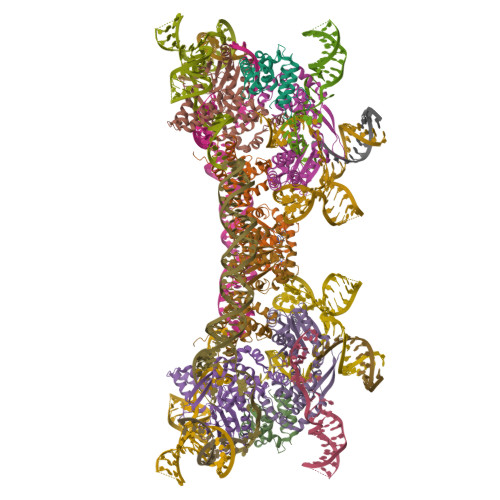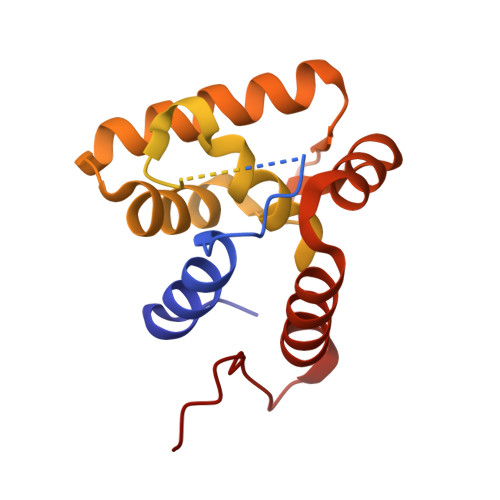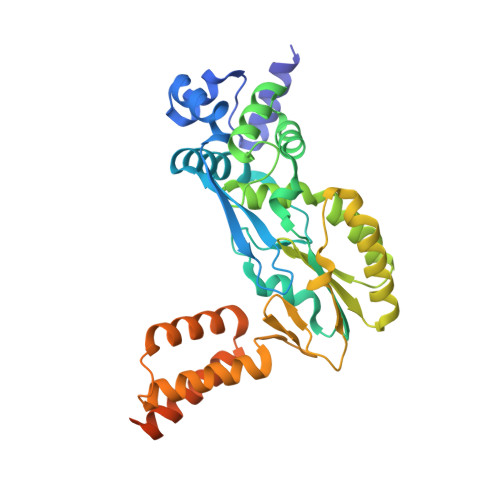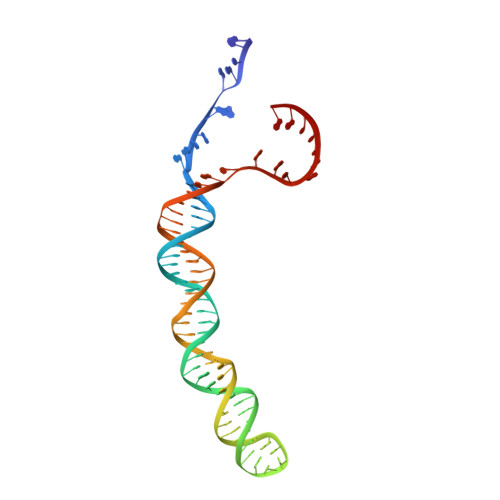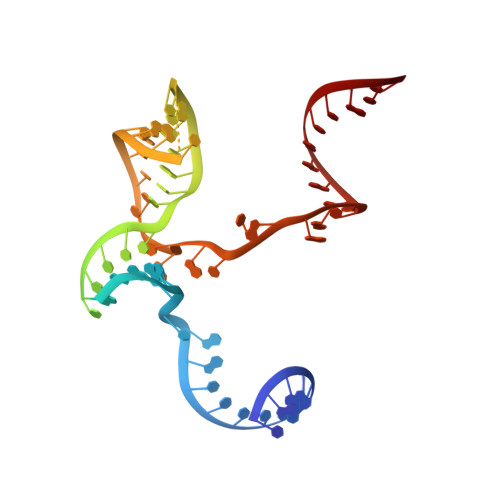Retron-Eco1 assembles NAD + -hydrolyzing filaments that provide immunity against bacteriophages.
Carabias, A., Camara-Wilpert, S., Mestre, M.R., Lopez-Mendez, B., Hendriks, I.A., Zhao, R., Pape, T., Fuglsang, A., Luk, S.H., Nielsen, M.L., Pinilla-Redondo, R., Montoya, G.(2024) Mol Cell 84: 2185
- PubMed: 38788717
- DOI: https://doi.org/10.1016/j.molcel.2024.05.001
- Primary Citation of Related Structures:
8QBK, 8QBL, 8QBM - PubMed Abstract:
Retrons are toxin-antitoxin systems protecting bacteria against bacteriophages via abortive infection. The Retron-Eco1 antitoxin is formed by a reverse transcriptase (RT) and a non-coding RNA (ncRNA)/multi-copy single-stranded DNA (msDNA) hybrid that neutralizes an uncharacterized toxic effector. Yet, the molecular mechanisms underlying phage defense remain unknown. Here, we show that the N-glycosidase effector, which belongs to the STIR superfamily, hydrolyzes NAD + during infection. Cryoelectron microscopy (cryo-EM) analysis shows that the msDNA stabilizes a filament that cages the effector in a low-activity state in which ADPr, a NAD + hydrolysis product, is covalently linked to the catalytic E106 residue. Mutations shortening the msDNA induce filament disassembly and the effector's toxicity, underscoring the msDNA role in immunity. Furthermore, we discovered a phage-encoded Retron-Eco1 inhibitor (U56) that binds ADPr, highlighting the intricate interplay between retron systems and phage evolution. Our work outlines the structural basis of Retron-Eco1 defense, uncovering ADPr's pivotal role in immunity.
Organizational Affiliation:
Structural Molecular Biology Group, Novo Nordisk Foundation Centre for Protein Research, Faculty of Health and Medical Sciences, University of Copenhagen, Blegdamsvej 3B, 2200 Copenhagen, Denmark. Electronic address: arturo.cdr@cpr.ku.dk.








